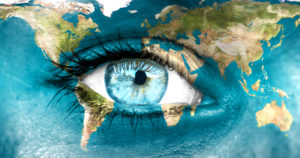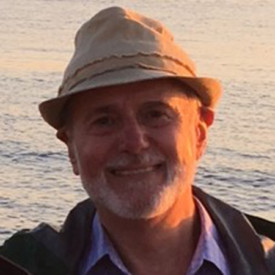As I begin to write this review of Ann Drake’s excellent new book The Energetic Dimension, Americans are trying to make sense of the two most recent shootings over the weekend in El Paso, Texas, and Dayton, Ohio, which together left 31 people dead and many more injured. We’ve had this nightmare before, and we’ll undoubtedly have it again. But this time I viewed the two shooters through a different lens, thanks to the teachings in Drake’s book. The subtitle is Understanding our Karmic, Ancestral, and Cultural Imprints. I don’t mean that I can tell you why the two men randomly shot so many people or what their thinking was. At this moment I don’t even know their names. But each of them, like each of us, has karmic, ancestral, and cultural imprints. Life events imprinted the minds, hearts, and spirits of these men with enough anger, hate, fear, or frustration that each decided to commit an act of extreme violence upon people they didn’t really know.
As Drake points out, each of us carries “unhealed energies from previous incarnations, our ancestors, and the cultural, racial, generational, and spiritual imprints from our current incarnation.” She defines energetic imprints as “energetic vibrations” present in our energy bodies that are absorbed from many sources both past and present. Westerners need to be aware that our psyches are grounded in materialism, and we tend to “treat our thoughts as fact.” So the stories we tell ourselves about people, other groups, or cultures can carry messages from childhood, messages formed by our own race, gender, class, and culture. But our beliefs about a group of people are simply thoughts, not facts, and even if we change them, “the fear of the other is another matter, as the fear lives in our energetic body.” Drake points out that “traces of hate and racism” will lie dormant in our energy fields if we don’t own and recognize their presence and the power they exert over us.
spiritual imprints from our current incarnation.” She defines energetic imprints as “energetic vibrations” present in our energy bodies that are absorbed from many sources both past and present. Westerners need to be aware that our psyches are grounded in materialism, and we tend to “treat our thoughts as fact.” So the stories we tell ourselves about people, other groups, or cultures can carry messages from childhood, messages formed by our own race, gender, class, and culture. But our beliefs about a group of people are simply thoughts, not facts, and even if we change them, “the fear of the other is another matter, as the fear lives in our energetic body.” Drake points out that “traces of hate and racism” will lie dormant in our energy fields if we don’t own and recognize their presence and the power they exert over us.
Energy fields radiate out around us and can join another’s energy field, thus causing negative or positive energy to spiral into ever greater vibrations. Even the energy around us that is composed of peace and respect can spin outward and join with others’ fields, according to the principle of attraction. Drake experienced this first-hand in Bhutan, a small country between China and India where, as she puts it, “the physical beauty (of the land) ….is surpassed by the kindness and gentleness of its people.” This is the country that has declared its gross national product to be happiness. She recognized among the Bhutanese people a “spiritual and cultural imprint that implies ‘we are all one and one with all that is and are part of the infinite consciousness.’” Allowing, however, that “life is not perfect” in Bhutan, Drake looks for examples of this in other countries she visits, confirming her belief that war and violence are not endemic to human nature. Her writings share these experiences with us.
One of Drake’s most important insights, from my point of view, is that each of us comes into this life with a dual purpose. We each have something to  heal from past incarnations and something to manifest that is unique to us in this lifetime. Imprints from past lives can cloud our true sense of self so that we never accomplish these two goals. Often the clouds are “self-hate, shame, and blame.” Because our culture is so dualistic and we think “in dichotomies of right and wrong,” we are programmed to look for someone to judge and blame. But what our shamanic practice shows us, and what it needs from us, is to try “compassionately to understand why either we or the other person acted as they did.” Everyone is working under the influence of ancestral and karmic imprints, and wise shamanic practitioners recognize this when working on themselves or with others. Drake presents specific practices to achieve this.
heal from past incarnations and something to manifest that is unique to us in this lifetime. Imprints from past lives can cloud our true sense of self so that we never accomplish these two goals. Often the clouds are “self-hate, shame, and blame.” Because our culture is so dualistic and we think “in dichotomies of right and wrong,” we are programmed to look for someone to judge and blame. But what our shamanic practice shows us, and what it needs from us, is to try “compassionately to understand why either we or the other person acted as they did.” Everyone is working under the influence of ancestral and karmic imprints, and wise shamanic practitioners recognize this when working on themselves or with others. Drake presents specific practices to achieve this.
Karmic and ancestral burdens especially need to be healed because this is a time of serious transformation on the planet. Drake reminds us that “wisdom from other lifetimes is sorely needed as we seek a new evolved consciousness.” Imprints from other lifetimes and from our ancestors are not always burdens. Drake points out that we also need to “remember to access the many gifts and talents that we have amassed over lifetimes.” We need the ancient knowledge of living close to the earth and the rhythms of the seasons, and the “teachings of the plants that can sustain and heal our bodies.” Then perhaps we will be able to “live in harmony with the other beings with whom we share the planet.”
Healing karma is “not about doing to another what was done to you….Rather it is about healing the negative patterns that have been repeated through many lifetimes.” Drake’s book shows readers how to do this and avoid what she calls “the perils of delving into previous lifetimes.” She warns that if we “delve (too) deeply into our past lives …we (may) lose touch with the richness, meaning, and purpose in our current incarnation.” Since our culture is so addiction-driven with drugs, alcohol, and social media, we need to “stay focused on the aspect of our life that we came here to heal” and not let our fascination with previous lives derail us from that. Shamanic practitioners have an obligation to help clients remember this and live accordingly.
Cultural imprints make up the lens through which we view our lives and the lives of others. As shamanic practitioners we need to be aware of these cultural biases. In addition to race, gender, and class, cultural imprints include religion (or the lack of it), the land which holds vibrations of all that went before us, and the familial culture that we were raised in. We also are shaped by the growing globalized culture. Some people embrace it and see it as liberating, while others fear it, worry about what the future holds, and try to fight it. Shamanism can help the mind stay “open and fluid,”as Drake says so that “the energy that surrounds various beliefs moves and shifts like the wind, blowing away an old perspective for a new one.”
went before us, and the familial culture that we were raised in. We also are shaped by the growing globalized culture. Some people embrace it and see it as liberating, while others fear it, worry about what the future holds, and try to fight it. Shamanism can help the mind stay “open and fluid,”as Drake says so that “the energy that surrounds various beliefs moves and shifts like the wind, blowing away an old perspective for a new one.”
I recommend this book to everyone interested in a new paradigm for the Western mind, especially as we come to terms with the global culture in which we live, and the various types of human beings that come with it. We may never truly understand why, for example, a person becomes a terrorist and perpetrates unspeakable violence on other human beings. But The Energetic Dimension will help us recognize the common humanity that we share even with those individuals who shock our sense of decency, oneness, and compassion.





What a thoughtful review – I’m excited to read Ann Drake’s newest book!
Thanks Tom, but I find this review puzzling.
The statement: “each of us carries “unhealed energies from previous incarnations, our ancestors, and the cultural, racial, generational, and spiritual imprints from our current incarnation.”….and, “seeking a new evolved consciousness”…many of these concepts like: incarnation, karma, spiritual imprints, etc…come from ancient mystery schools and “new age” thinking.
In shamanic parlance, are energy and spirit fully interchangeable? If not, how do we distinguish between the two? Does all energy have a spiritual nature? When does energy become spirit? Does spirit eventually decompose into energy?
Thanks Tom for the review; it has piqued my curiosity. AND, I would love to read/hear the responses to Steve’s most insightful and profound questions, as they mirror some of my own.
Respectfully.